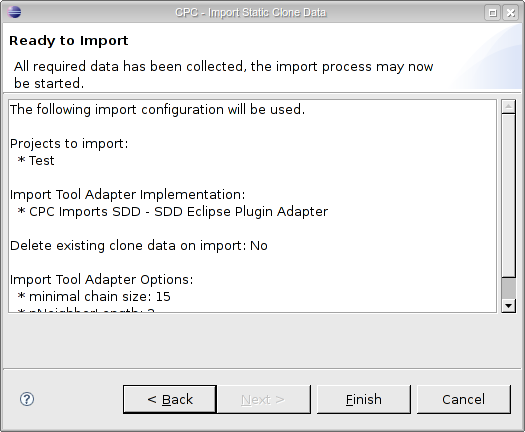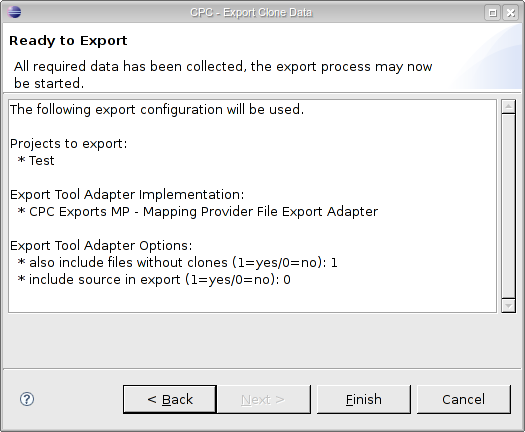CPC ruler



The CPC ruler indicates the location and state of clones with a small coloured bar at the left side of each editor. The colours can be customised via the CPC preferences.
Warnings


Update anomaly warnings provide the developer with a number of choices. The clone can be ignored for future anomaly warnings, the current notification can be dismissed or the entire clone can be deleted from the clone database.
Clone Views



The default installation of CPC contributes two clone views to the Eclipse IDE. The simple clone view lists all clones of the currently edited file. The tree clone view lists all clone groups which have at least one member in the current file. Update anomaly warnings are also shown within the default problems view.
Clone Modification History

The complete modification history of each clone can be explored in the clone replay view. Past modifications can either be displayed step by step or an automated mode can be used to replay the entire history of a clone automatically in a move like fashion.
Clone Details


The clone details dialog and the CPC contributions to the properties view can be used to obtain more detailed information about specific clone instances.
Preferences

The CPC preferences pages enable the user to customise a large part of the behaviour and appearance of CPC. I.e. the UI Ruler page allows you to specify your own CPC ruler colours and the width of the ruler.
Clone Data Import





The CPC Clone Data Import allows the import of static clone detection results to jump start the clone database in cases where CPC is introduced late in the development cycle. CPC ships with an adapter for the Eclipse SDD clone detection plug-in and can easily be extended to support other static clone detetors.
Clone Data Export






The CPC clone data can be exported in order to allow CPC users to send in copy and paste clone data for future research. CPC does not transmit any data automatically. The export functionality could also be used for a number of other tasks. The CPC framework enables 3rd parties to easily contribute additional export techniques and formats.
CPC Update Site:
cpc.anetwork.de/update
1.0.2 2008-02-23